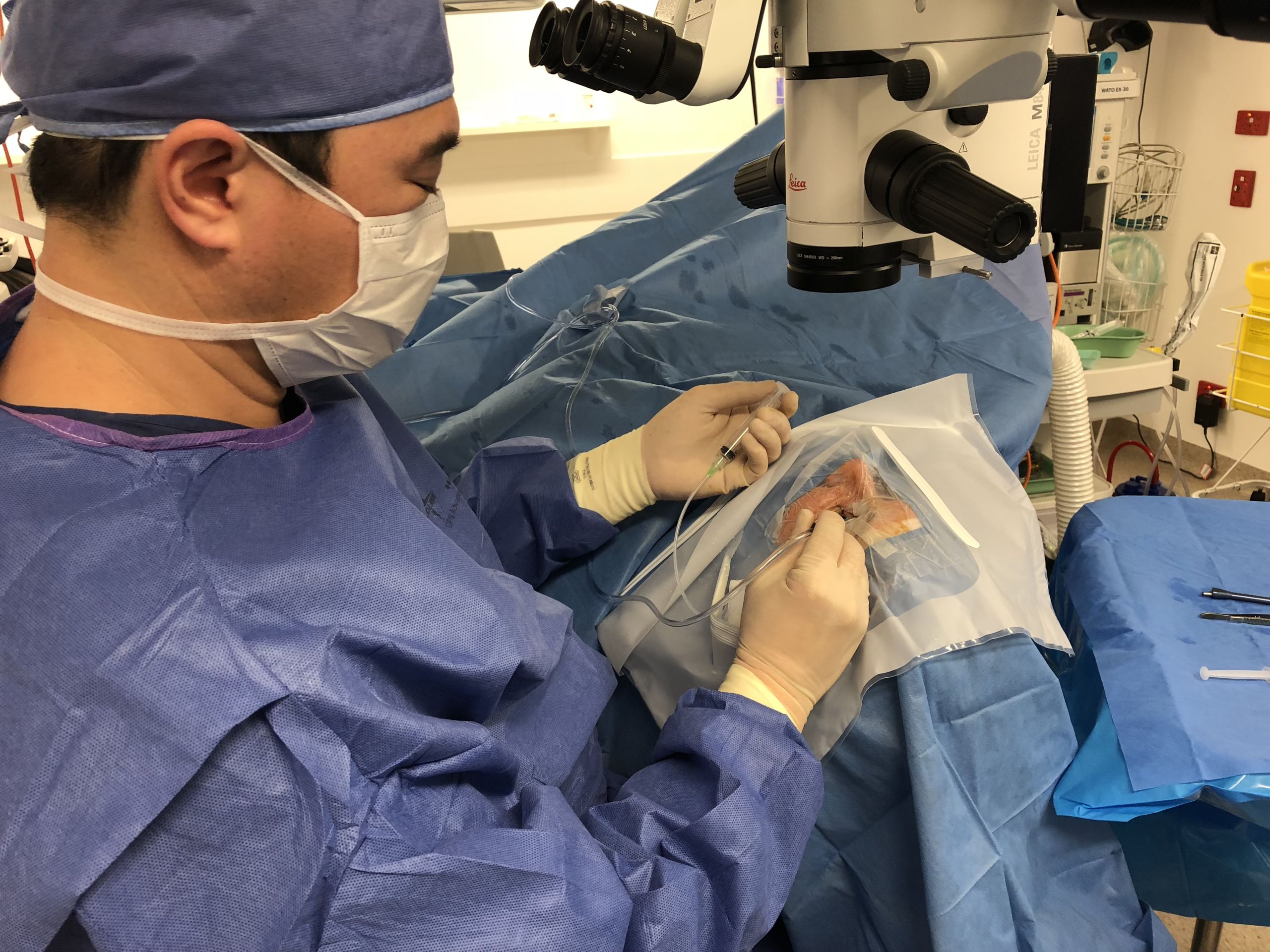A look inside the only eye

Ophthalmologist Associate Professor Graham Lee explains what it is like to perform eye surgery on someone with only one functioning eye. His collaborative project with Professor Peter Shah (UK), the Only Eye Surgery project aims to improve the patient and surgeon experience during these high-stake surgeries.
Imagine you have only one eye
Disease, disability or injury may have robbed you of two seeing eyes, but this remaining eye affords you an ordinary, independent life… until suddenly you need surgery. If anything goes wrong, your ability to see the world and to live a normal life disappears.
For patients who have barely come to terms with their unilateral sight, a situation not uncommon in advanced glaucoma, the prospect of surgery on their only remaining eye can be a seriously emotional ordeal. Surprisingly little research exists on the patient and surgeon experience, with no established guidelines for healthcare professionals to manage these challenging cases.
An eye for an eye
As a surgeon, I regard these procedures as a big responsibility to take on. The fear of failure, permanent disability and surgical complications can all influence the surgeon’s stress levels during an operation. Overcoming the mental battle is one thing. Every precaution needs to be in place so if things are not going to plan, I as the surgeon have the equipment, skills and confidence to achieve the best outcome.
The awareness that surgical complications could eventuate in complete vision loss, thereby stripping my patient of their independence, can affect how one performs on the day. This is especially a factor for trainees or new consultants starting out in their practice.
Matter of time
The more subspecialist your practice, the more complex cases you are likely to see. I've spent my ophthalmic career performing surgery on advanced glaucoma patients. Not infrequently, they have already lost sight in one of their eyes. Now, they must undergo surgery on their only remaining eye or risk progressive vision impairment from glaucoma or cataract.


As Fred Hollows once said, "Every eye is an eye, when you're doing the surgery there that is just as important as if you were doing eye surgery on the prime minister or the king."
As ophthalmologists, I know many of us operate on every eye as if it is the only eye.
The risk of operating on a patient with one eye is the same as a patient with two eyes. However, if you are operating on someone with only one eye, the surgery itself does not change, but the stakes become much higher.
I like to make sure all my staff are relaxed in the operating room. I don't want to have any additional pressure which may influence their performance or cause any unnecessary pressure. Whether it's one or two eyes, I know my staff are doing their best, and really, the pressure is on me as the surgeon to perform.
Keeping calm, learning to carry on
As a patient, you don't want your surgeon to be unnecessarily anxious. Having surgery is stressful enough, but you need absolute confidence in your surgeon, to be reassured during the procedure.
So, how do I cope with these demands? The performance of only eye surgery requires the full support from the operating team. I need a familiar anaesthetist, scrub team and equipment; all these things are tightly controlled so I can concentrate on the surgical aspects of the procedure.

Associate Professor Lee performs a slit lamp examination.
Associate Professor Lee performs a slit lamp examination.

Indirect Ophthalmoscopy.
Indirect Ophthalmoscopy.

A diagnostic lens for fundal examination.
A diagnostic lens for fundal examination.

Associate Professor Graham Lee and Professor Peter Shah in the Swiss Alps.
Associate Professor Graham Lee and Professor Peter Shah in the Swiss Alps.
Supporting the next generation
For many young surgeons, the stresses of operating on only eye patients have never been considered. The more experience you have, the more aware you are of complex individual patient needs. These skills are acquired through hands-on experience.
Experience performing and managing these surgeries should be part of incremental surgical training. If I am the surgeon supervising the trainee, I need to gauge whether they will be able to manage the patient’s surgery, not just technically but under the associated stress factors. Thus only eye surgery is often reserved for more advanced trainees who have already mastered the procedure and now are developing the emotional skills required for long-term practice.
Eye to the future
The Only Eye Surgery project is about opening a dialogue for surgeons performing surgery and patients undergoing surgery. With these insights, we hope to provide the optimal experience for both parties in order to achieve the desired outcomes. We need to protect our future generation of surgeons by arming them with the necessary coping strategies and reduce the risk of psychological burnout.
Learn more about the Only Eye Surgery project.